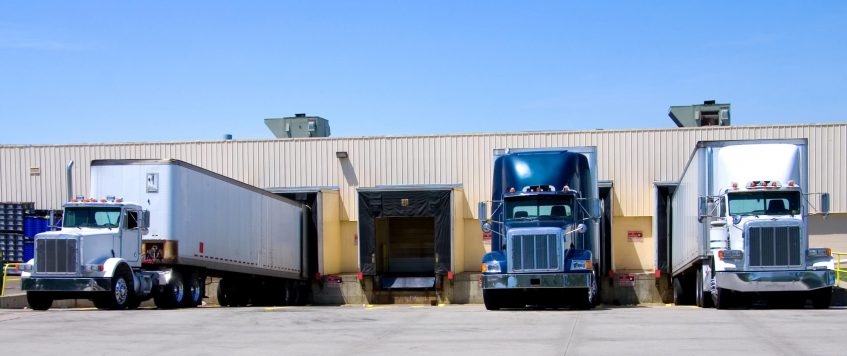-
08
Feb
Carriers Bullish on Demand and Pricing Dynamics for 2021
Top less-than-truckload (LTL) executives and analysts are predicting a bullish year for the $46 billion sector in 2021.
LTL Rate Increase
Despite disruptions from the coronavirus and resulting changes in demand levels from their customers, leading LTL companies are extracting rate increases in the mid-to-high single digits, according to carriers and analysts.
Top less-than-truckload (LTL) executives and analysts are predicting a bullish year for the $46 billion sector in 2021.
Despite disruptions from the coronavirus and resulting changes in demand levels from their customers, leading LTL companies are extracting rate increases in the mid-to-high single digits, according to carriers and analysts.
Chuck Hammel, president of Pitt Ohio:
“This is a positive freight environment, LTL companies are all raising rates.”
Likewise, Darren Hawkins, CEO of Yellow Transportation, called LTL pricing “strong,” and said carriers were taking full advantage to recapitalize their fleets. In Yellow’s case, it is helped by a $700 million influx of cash as a result of the Coronavirus Aid, Relief, and Economic Security (CARES) Act.
Satish Jindel, principal of SJ Consulting, which closely tracks the LTL sector, told LM, “It’s a wonderful time to be in the LTL sector.”
There are several reasons. One is pricing power. Unlike the splintered truckload sector where the leading carrier, Knight-Swift, barely controls 1 percent of the TL market, there is concentration atop the LTL marketplace. The top 25 LTL carriers account for nearly 90 percent of the marketplace.
In fact, Yellow controls 10% all by itself—through long-haul carrier Yellow Freight and its three regional subsidiaries, New Penn, Holland, and Reddaway.
The bigger question for LTL executives is will it last? In past boom cycles, one or two large LTL carriers would exhibit poor pricing discipline. In 2008, during the post-Great Recession downturn, a few large carriers sensed Yellow was on the brink of bankruptcy and initiated a pricing war with Yellow.
Now, with Yellow on firmer financial footing thanks to the $700 million influx of cash, no one is holding their breath any longer. Yellow is using some of that $700 million to replace some of its older trucks.
Satish Jindel, principal of SJ Consulting:
“They’re only going to be replacing trucks, not adding to their fleet. “They have such an outdated fleet. They have been driving around with older trucks than anyone. Why would they expand. Do they need to expand?”
The answers are no and no. Expansion in truckload can be justified because the carrier only needs a driver and a truck. Carriers need three things to expand in LTL – drivers, trucks, and terminals.
“The latter are not easy to come by,” Jindel said, noting that environmental and zoning regulations often make terminal expansion and purchase a costly proposition.
Such conditions effectively mean there is a cap on capacity in the LTL sector.
Jindel predicted for 2021:
“Pricing will be good to very good. “I expect a mid to high single digit rate increase.”
So, even with declines in shipment volumes from COVID-related closures, carriers have adapted their networks to achieve maximum efficiencies.
Jindel:
“Those closures are not as strict this year. Shipment counts should stay fairly robust. That should mean good performance for carriers.”
That would be a continuation from last year. Some publicly held carriers enjoyed boom years in 2020, according to their stock prices. Saia’s stock was up 90% last year. Similarly, Old Dominion Freight Line was up 55% and ArcBest, parent of ABF Freight System, rose 45%.
2020 Peak Season Record
FedEx, UPS, U.S. Postal Service, Amazon Logistics and regional carriers such as LaserShip, LSO and OnTrac collectively set an industry record of delivering over 3 billion parcels during the past peak season.
For parcels scheduled for delivery between Dec. 20 and 26, according to ShipMatrix, FedEx was at 96.5%, UPS at 97.6% and USPS at 94.7%. While this performance was better than prior weeks, handling such huge spikes in volume with temporary methods (that includes deliveries made on Christmas Day) still resulted in over 2 million parcels not delivered by Christmas.
Such volume spikes have had a tangential benefit to the LTL carriers, Jindel said. But he said the bigger factor helping LTL carriers was shipments from Amazon’s 155 fulfillment centers. “The more centers they have, less quantity they need on hand in inventory and that converts into more LTL shipments,” Jindel said.
Jindel continued:
“The LTLs are getting significant impact and opportunity to participate in the retail sector evolution—or revolution. The LTLs used to ignore retail. They got rid of that old way of thinking. Retail is going to be a bigger sector of LTL. Those who don’t pay attention will fight over smaller pieces of the LTL market. You can’t operate in the retail sector with the same attitude as industrial freight.”
Retail shipments can be different. Often they are lighter and cube out before weighing out in 80,000-pound trucks. So LTL must raise rates to handle that. Most deliveries are not made to docks, but inside to retail stores. That’s another adjustment for carriers.
“Customers aren’t going to change, you have to change,” Jindel advised carriers.
Jindel said the only way the current pricing environment could lose momentum would be if “some large LTL carrier loses its mind and lowers price to gain more freight to lose more money. I can’t see any of LTL carriers being that unwise.”
How long will this environment last? “I don’t see any end in sight,” Pitt Ohio’s Hammel said.
By By John D. Schulz / SupplyChain247

